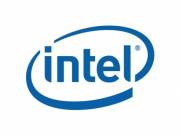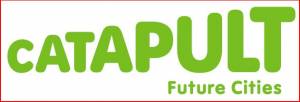This institute is a collaboration between Intel, University College London and Imperial College Department of Computing. It is concerned with how to enable future cities to be more connected and sustainable. This will entail investigating, developing and deploying adaptive technologies that can optimize resource efficiency, and enable new services that support and enhance the quality of life of urban inhabitants and city visitors. There are many fundamental technical, social and urban challenges and opportunities that need to be addressed to accomplish this. Our approach is interdisciplinary, combining methods from computer science, the social sciences, interaction design and architecture to improve how cities are managed and maintained in order to ensure and enhance citizen well-being. More about ICRI at http://cities.io/
“Books summarising the work completed in the discovery and capstone phases of the project are available as pdf’s below or via the book covers linking to the print on demand service Lulu:
Capstone Phase (2016-2018): http://cities.io/icri2018.pdf
Discovery Phase (2012-2015): http://cities.io/icri2015.pdf"

Main Contributors
Guiding Principles
Our vision is to investigate, develop and deploy adaptive technologies that can optimize resource efficiency, and enable new services that support and enhance the quality of life of urban inhabitants and city visitors. There are many fundamental technical, social and urban challenges and opportunities that need to be addressed to accomplish this. From the outset, the ICRI will differentiate itself from other smart cities initiatives by incorporating the following core guiding principles into its research approach:
- Design for humans as part of the solution
- Build for the long term – design robustly for the imperfections of the real world
- Deliver the triple bottom line – economic, social and environmental value
Projects
To address these themes the ICRI has a number of projects that range from the entirely blue-skies research to much nearer term deployment and test beds. These are L3, CaaP, Harnessing the Invisible City, Enabling Connected Communities, Sustaining Sustainable Practices. These projects span all the ICRI partners, however the Imperial team are mostly involved with the following:
London Living Labs (L3)
A living lab is an environment that is instrumented to enable experiments to be carried out in situ. Run out of the ICRI-Cities, the L3 is co-sponsored by Intel Labs Europe and the TSB Future Cities Catapult, partnering with a consortium of UK based companies is creating a dynamic series of testbed sites in a variety of urban environments including schools, parks and inner city neighbourhoods.


The focus of this project is at the city scale. In this vein, our London Living Labs (L3) is a large-scale generic facility and testbed intended for a consortium of partners to use on a range of projects. Its aim is to provide a rapid experimentation environment, with a lifespan measured in years not weeks. The L3 is therefore a facilitator for the ICRI proofs-of-concept research and in-the-wild deployments and consists of projects across 3 sites: Hyde Park, Brixton and Enfield.
Essentially the London Living Labs comprise heterogeneous wireless sensor networks incorporating gateways and edge-based sensing and computing technologies to provide an end to end Internet of Things solution. An ethnographically informed research approach coupled with design science helps us understand a range of scenarios and use cases with communities, city officials and stakeholders.
Hyde Park
This work is specifically with the Royal Parks and a consortium currently including ARUP, City Insights, EE, Seeper, and Nuel. The ICRI Cities was been given a unique opportunity to instrument Hyde Park, one of the World’s great urban Parks to on one hand enable a test-bed facility and on the other help Royal Parks staff better understand the following:
1) Ecology: Hyde Park is being impacted by drought and extreme wet conditions and more coverage of transpiration, canopy evaporation, local weather patterns, soil monitoring, general climates and ecosystems in the park is required.
2) Air quality: This is a known concern in many cities and empirical evidence on the variation of particulates in the air is of interest to understanding how to mitigate poor air quality. There is particular interest in evidence around the role the parks play in supporting mitigation.
3) Water Quality: The Serpentine River is prone to algal blooms caused by warmer temperatures and high nutrient levels in the water. These blooms can kill fish and make it unpleasant for bathers and boaters. More data is needed on water quality (oxygen levels, turbidity, chlorophyll, PH, redox, nutrients) and the effects of seasonal change
4) Noise and Light Pollution: How noise and light pollution affect a) birdsong (birds singing at ‘wrong’ times of day, increasing the pitch of tweeting etc) b) people (peace and quiet, cultural perceptions of sound (cars/stream of water) so wavelength and intensity (sky glow) are useful.
5) Public Engagement: Communication with the general public and especially with schools and visitors is important and has room to be enhanced. In addition to giving visitors insight into events and the less visible elements of the park such as selected environmental and wildlife data, Royal Parks would like to better communicate the rich oral history of the park to tourists.
The Hyde Park deployment provides an experimental platform for a minimum period of two years capable of supporting and managing data input from a range of fixed, mobile and participatory sensors, including citizen-generated contributions. The Royal Parks are interested in collecting continuous data streams over several seasons. As part of the The Future Cities Catapult initiative, sensed data is to be made available for use in their “urban observatory” so that other organizations can build on the urban data. A number of ICRI projects will intersect with this flagship initiative.
Enfield
This deployment, in co-operation with Enfield Council, aims to explore the use of lower cost, highly distributed sensor networks with a particular focus on air quality monitoring. This work will explore nudging behaviours through making real time information available regarding pollution hot spots at junctions and investigate the impact of communicating this on driver behaviour. This project will monitor other factors that contribute to urban pollution as well as traffic flow.
Brixton
The Brixton Listening Lab project is an 8-10 Month feasibility study funded by UK Technology Strategy Board to explore multidisciplinary collaboration to design and prototype a data-driven urban behaviour change model which will focus on nudging walking behaviors in the urban environment as a way of countering air quality, improving health, and building community connectedness and placemaking through exploring the relationship between urban environmental challenges (air pollution, mobility, preventative health) with social challenges (socioeconomic and geographical tensions, technology access, public safety). This work, currently partnered with Loop Labs, will design a participatory-led approach to community engagement includes the local council representatives, the Transport for London, Code for Europe, and various Brixton-led community groups.
